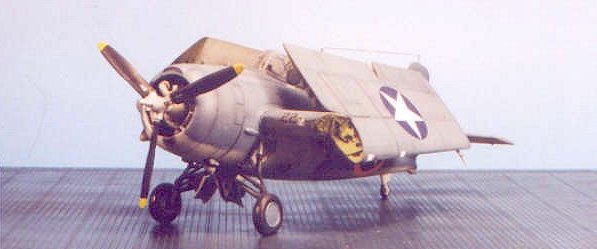
|
KIT: |
Tamiya 1/48 F4F-4 Wildcat |
|
KIT # |
61034 |
|
PRICE: |
$26.00 MSRP |
|
DECALS: |
See review |
|
REVIEWER: |
|
|
NOTES: |
Lone Star resin wing fold set used |

|
HISTORY |
VF-41 and Operation Torch:
VF-41, the fighter squadron assigned to U.S.S. "Ranger", was the first U.S. Navy unit to take the Wildcat on operational strength when it received F4F-3s in December, 1940. In January 1942, the squadron was the first to equip with the F4F-4 version, the first Navy Wildcat with folding wings. By the fall of 1941, they were one of the most operationally- experienced Wildcat squadrons in the fleet, though they had yet to see combat.
Since the U.S. entry into the war following the attack on Pearl Harbor, the United States and Great Britain had attempted to come up with a mutually-acceptable strategy for confronting the Nazis. The U.S. Joint Chiefs had originally pressed for Operation Roundup, which would have been an invasion of Northern France by four divisions of Anglo-American troops, to take and hold the Cotentin Peninsula. The British under Churchill were absolutely determined not to face the Germans in northwestern Europe until there was as much of an overwhelming advantage as could be gained; Churchill could not politically withstand another blood-letting in France on the scale of the First World War, and knew also that if the invasion was not successful the first time, there would be no political or military ability to mount it a second time.
With the Americans
wanting to take action in 1942, Churchill managed to convince Roosevelt that it
would be relatively simple for the U.S. to take over western North Africa from
Vichy France, thus relieving German pressure on the British in Egypt, and
creating a longer-term opportunity for further offensives in southern Europe.
Reluctantly, the U.S. military chiefs acceded to the orders of the Commander in
Chief, and Operation Torch was created. It was hoped that the French would not
put up a real fight against their traditional American allies.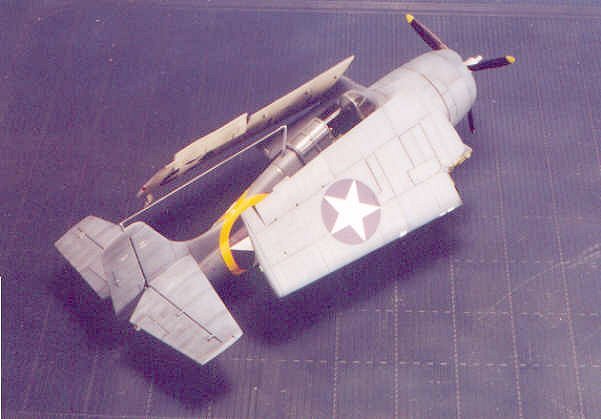
While the invasion of North Africa is now seen as a footnote in history, the operation provided the Americans the chance to test their operational theories, discover what didn't work, and hone both their amphibious forces and their army into a force that could take territory and face up to the still-powerful German Army. This first successful Allied amphibious operation would be dwarfed by those to come but not - in the words of Air Force historians Craven and Cate - in complexity, in daring,- and the prominence of hazard involved."
The American Task Force 34 was charged with invading Morocco, after transiting the Atlantic direct from the U.S. east coast. The "Ranger," the first U.S. aircraft carrier designed as such from the keel up, was the only "big" carrier available - and that because the ship was so small and short-ranged it could not be used in the Pacific, which now had only one U.S. aircraft carrier left afloat as the North African invasion loomed.
VF-41 was supplemented by VF-9, a squadron that had only been commissioned the previous March. At 0630 November 8, two 8-plane sections of VF-9 were launched to strafe Rabat airdrome. VF-41 launched 24 Wildcats at 0700, bound for Cazes airdrome. Among these pilots was Lt.(j.g.) Charles A. "Windy" Shields, flying Wildcat 41-F-22 in the last section.
Entry into combat quickly revealed that the pilots of VF-41 had not yet absorbed the lessons of combat in the Pacific. As the Wildcats came over Cazes airdrome, an anti-aircraft gun opened up on them and the section split up as Shields took the brunt of the fire. Diving toward the ground, his windshield fogged up momentarily, but he was still able to make a strafing run that silenced the weapon. After that, he was completely lost. He found his element leader and they dove on the field, when they spotted two aircraft Shields identified as Dewoitine D.520s headed their direction.
Shields turned into the attacking French fighters, but overshot his target and became one himself. He out-turned his opponent and gave a burst at long range that apparently killed the pilot for the Dewoitine then stalled and went straight in, bounced on impact and cartwheeled across the field. Suddenly, Shields saw his squadron mate Chuck August low over the field with two Hawk-75s of G.C.II/5 - the former Lafayette Escadrille - on his tail. Shields dove on the pursuers, one of who dove away as August turned on the other and shot him down. Shields found his opponent, who pulled up almost directly ahead. After a burst in the engine, the Hawk flipped over and went in inverted.
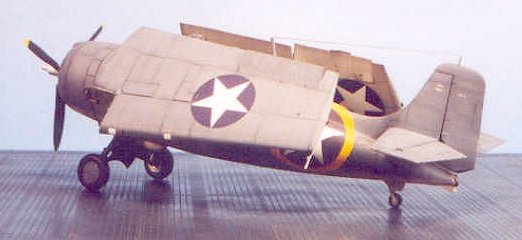 Shields heard the
call to join up, but as he attempted to do so he found himself in the middle of
more Hawks. Diving away he spotted a Douglas DB-7 on the runway and strafed it
successfully, but was then involved with another pair of Hawks. After taking
several bursts, the Wildcat caught fire from an incendiary. Shields bailed out
directly over the field and was soon a "guest of France."
Shields heard the
call to join up, but as he attempted to do so he found himself in the middle of
more Hawks. Diving away he spotted a Douglas DB-7 on the runway and strafed it
successfully, but was then involved with another pair of Hawks. After taking
several bursts, the Wildcat caught fire from an incendiary. Shields bailed out
directly over the field and was soon a "guest of France."
Both sides in the dogfight over Cazes overstated their victories. VF-41 claimed thirteen victories and one probable in aerial combat, plus six destroyed and eight damaged on the airfield. French losses were six shot down with loss of the pilot, one with the pilot surviving, and six aircraft so badly shot up they were unserviceable. French claims for seven Wildcats and one probable were closer, with six Wildcats failing to return to "Ranger."
Fighting in the region continued until 8 p.m. November 10, with a cease fire proclaimed on November 11, 1942. With German submarines all over the area soon afterwards, Task Force 34 headed back to the United States, returning to Norfolk by the end of the month.
VF-41 would remain aboard "Ranger" for another year, with their last Atlantic Theater action being in Operation "Leader," a series of air strikes on Norway in November 1943.
|
THE KIT |
Tamiya's Wildcat is one
of the best plastic kits available. It is so well-engineered that even a
modeler newly-returned to the hobby could construct an acceptable model with
little difficulty. The only real complaint about the kit is the fact that it
has a cockpit appropriate for the FM-2, with a full floor, rather than the
open-bottom cockpit of the F4F-4; this is easily fixed, either by cutting off
the sides of the floor and gluing in some evergreen sheet for the fuel tank, or
by replacement of the cockpit with an aftermarket set by Aires or True Details.
This last is not that necessary, since other than the floor problem, the cockpit
is nicely detailed, needing only some photo-etch seatbelts.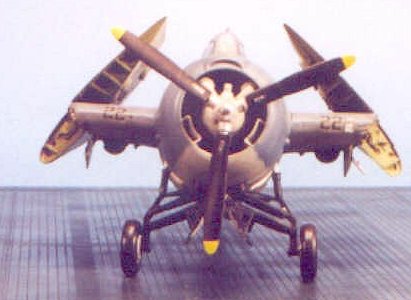
Two years ago, Dangerboy Hobbies released a set of folding wings for the Accurate Miniatures Avenger, following this with a set for the Hasegawa Hellcat and F4U-5 Corsair, with a final set for the F4F-4 being completed last summer, just before the company was sold to Lone Star Models, a well-known purveyor of aftermarket resin detail sets.
These sets are really excellent for those who want to have the wings folded on Grumman aircraft, since the Grumman system of twisting the wing at the fold and folding it backwards is very hard to scratchbuild, and results in a notoriously weak kit when other wingfold sets are used. The Dangerboy system completely replaces the wing and fuselage center section in the Wildcat kit, while the outer wings are attached by a strong plug - it's extremely easy to use, and results in a model strong enough to be picked up by a wingtip safely. This is also the only wing fold conversion set for the Wildcat that has the ailerons separate so they can be posed in the "both up" position they took when the wing was folded.
|
CONSTRUCTION |
I started this with the cockpit, which I painted FS34092 in the upper half and white in the lower fuselage, after cutting off the outer floor panels and using them as the side walls of the fuel tank. In truth, once the fuselage is assembled, you don't see a lot through the cockpit opening. I used ProModeler instrument decals for the panel, and an Eduard photoetch set for the seatbelts. I also painted the wheel well light grey.
After assembling the fuselage, I attached the Dangerboy center part, which replaced the kit wings. After the engine was installed and the cowling attached, the model was ready for painting.
|
PAINT & DECALS |
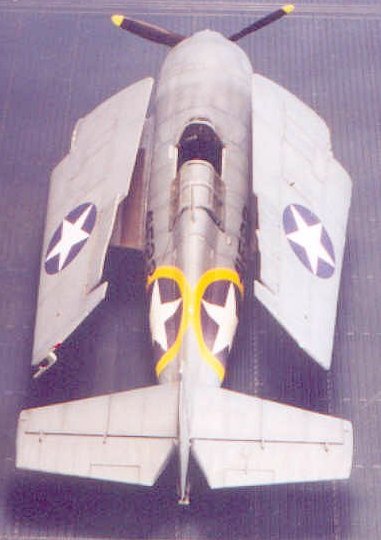 Painting:
Painting:
After pre-shading the panel lines, I painted the model in the blue-grey over light grey early war scheme, using Gunze Sanyo H-42 Blue-Grey (Gloss) for the upper color and Gunze-Sanyo H-51 Light Gull Grey (Gloss) for the lower colors. The upper color was "faded" by adding a small amount of Light Gull Grey and emphasizing the upper panels and upper surfaces of the wings and horizontal stabilizer. I had previously Futured the Squadron canopy I was using (be sure you get the one made for the Tamiya kit - the other is made for the old Monogram kit and is too small), and with it masked off I painted the interior color of flat black with blue-grey over that, all done on the outer surface. When all this was dry I Futured the model again.
Decals:
There are no markings for Shields' airplane, so I used letters and numbers from sheets in the decal dungeon, with the wing insignia taken from an Aeromaster sheet for the Wildcat. The fuselage insignia, with the yellow surround of Operation Torch was done with the unused insignias from the Accurate Miniatures SBD-4 Dauntless option of their "mix and match" set.
I used bits of decal numbers to make the fabric covers over the wing guns.
Final Assembly and Weathering:
I assembled the main landing gear and attached it in position in the wheel well - this is a bit fiddly, but if you have pre-fit things, it will "click" into position with no trouble.
The photos of the Wildcats used aboard "Ranger" on Operation Torch shows they were clean and well-maintained. I used Tamiya "Smoke" for the bit of exhaust staining as the only weathering; this is because the model represents Shields' airplane the morning of November 8, before he took off from "Ranger."
|
CONCLUSIONS |
This is a good project for a "first conversion set" model. The basic Tamiya kit is very easy to work with, and the Dangerboy system in the conversion is so easy that a novice could get a result that looks better than what a scratchbuilding master could have attained before the release of this set.
Thanks to Lone Star Hobbies for the review set.
If you would like your product reviewed fairly and quickly by a site that has well over 100,000 visitors a month, please contact me or see other details in the Note to Contributors.